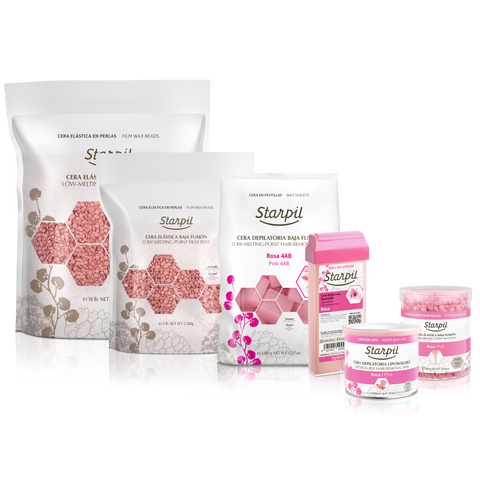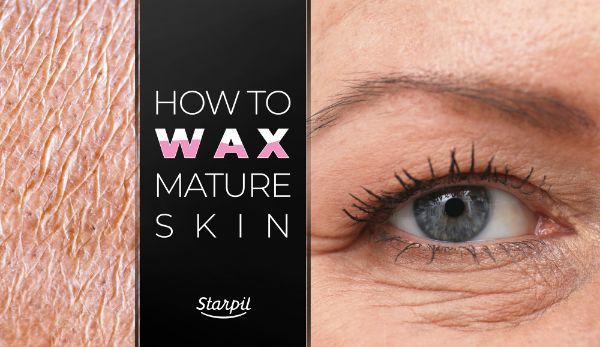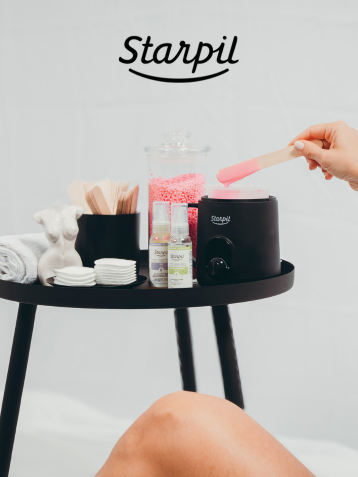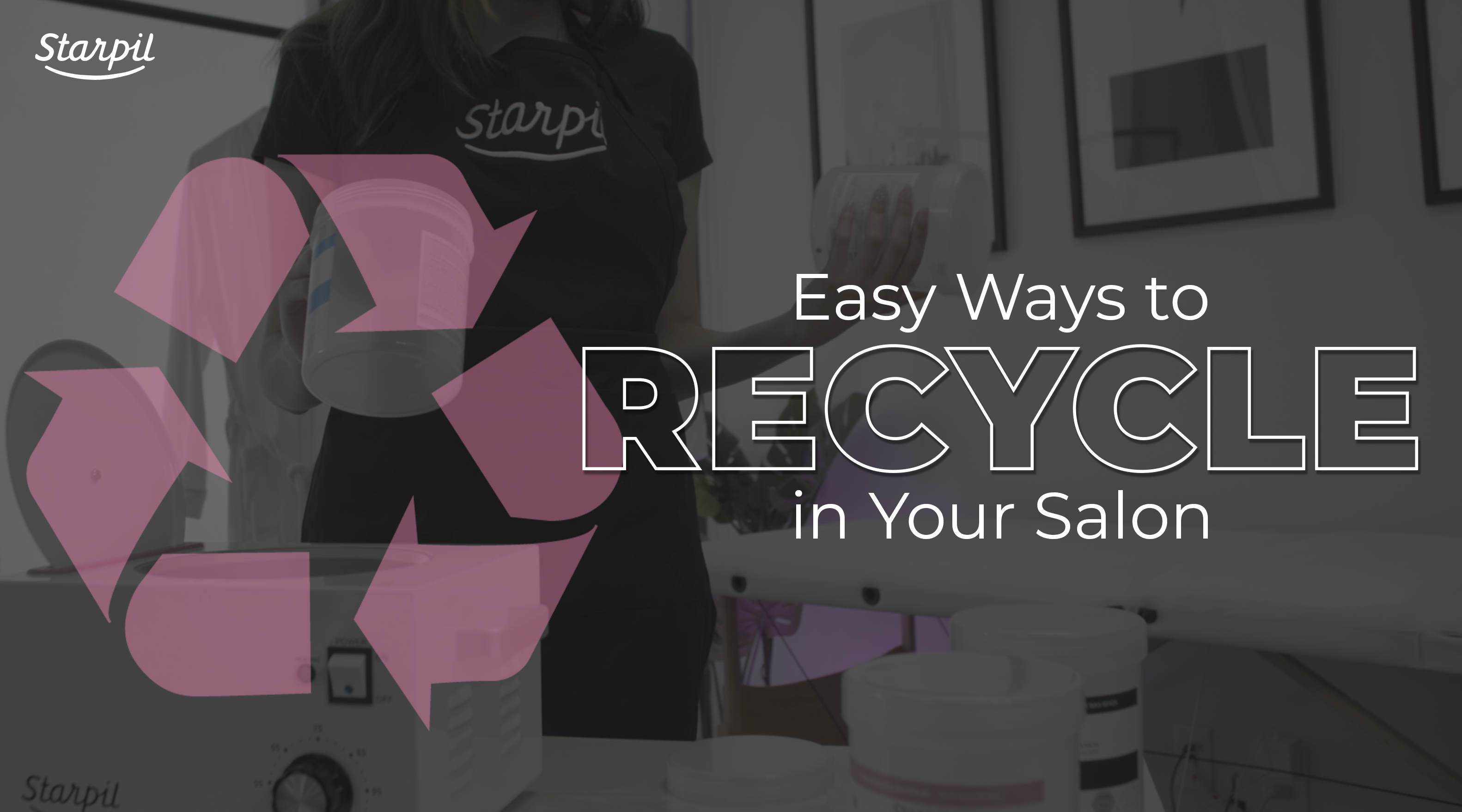5 Tips for How to Wax Sensitive Skin

When it comes to skin types, none are as unpredictable and temperamental as sensitive skin. No matter how much we try to nurture sensitive skin, it can be hard to keep up with or seemingly throw blotchy red tantrums out of nowhere.
When waxing sensitive skin, the stakes can be even higher, but having the right knowledge and professional experience will let you wax confidently and safely on all skin types.
Table of Contents
In this article, we’ll give you five tips on how to wax sensitive skin ranging from the proper pre and post-wax care routine to choosing the best wax for sensitive skin.
We’ll also go over what to look out for when waxing clients with sensitive skin, and how to break the news if waxing may not be right for them.
How to Identify Sensitive Skin on a Client
Sensitive skin comes in many forms and isn’t always easy to spot. On top of sensitivities related to allergens, some people can have skin sensitivities toward certain ingredients, pollution, or natural fibers in the air, like pollen, which can manifest on the skin.
Other people might also experience temperature-related skin issues where even a warm finger over their skin can cause redness. Skin sensitivities can also come in the form of dehydrated skin, or can result in dry skin patches.
Though some people can have dry and sensitive skin or oily and sensitive skin, everyone’s skin type is different. It also can be hard to identify which skin type you or your clients have, or if it’s a combination of the two. So what’s the difference between types of sensitive skin?
Types of Sensitive Skin
As we said before, it can be hard to identify skin types without fully knowing what to look for. Below are some common identifying factors to determine which sort of skin type you’re working with.
Sensitive and Dry Skin
Dry skin doesn't provide enough moisture or sebum protection for nerve endings, which causes skin sensitivities. This may cause the skin to turn red easily, break out in rashes, or feel inflamed. Those with susceptible skin can also easily break out in pustules and bumps.
People with both dry and sensitive skin can experience a combination of the following elements:
Sensitive and Oily Skin
Skin that is both sensitive and oily is often easier to identify, but more challenging to treat. Oily skin commonly presents itself as being greasy, with enlarged or clogged pores, persistent pimples or acne, and might look textured or rough. So what causes oily skin and its characteristics, and can you have both of these skin types at once?
Skin can be both oily and sensitive, which can result in redness, acne breakouts, itchiness, or patchiness. Though sometimes oily skin can present to the untrained eye as dry skin, it’s often just dehydration. This causes the skin to produce excess oil which clogs pores and causes breakouts.
Waxing Sensitive Skin: What to Look Out For
Waxing sensitive skin can lead to hive-like symptoms, extreme redness, and skin lifting if not performed correctly. Waxing already-sensitive areas, like the bikini line or underarms of clients with sensitive skin types can also lead to “chicken skin,” where hair follicles get clogged by keratin and ingrown hair. However, there are ways to wax clients with sensitive skin safely, which we’ll go over below.
5 Tips for Waxing Sensitive Skin
Waxing sensitive skin can be tricky, and usually needs special care and attention to make sure skin is kept healthy and free from damage (while also free from hair!).
How to Prep Sensitive Skin for Waxing
When you think of pre-wax care, you might think of a couple of prep products for use right before the waxing service, but preparation should always begin off the waxing table - and before your clients even come to the salon.
Provide clients with an in-depth checklist of how they should prepare to be wax-ready once they book with you-especially those with temperamental skin.
1. Prep Skin for Hydration and Anti-Inflammation

The most important prep steps for sensitive skin are:
- Drink a lot of water before a waxing appointment.
- Avoid excessive caffeine, alcohol, or drugs.
- Eat foods rich in potassium such as bananas, leafy greens, or cucumbers because it eases sensitivity.

- Gently exfoliate with dry brushing and/or an oil-based salt scrub. Don’t overdo it and only do it once a week.
- Avoid excessive sun exposure.
- Wear skincare with natural and toxic-free ingredients.
- Take an anti-inflammatory about an hour before a waxing service.

If you have a first-time client and believe that they have sensitive skin, go the extra mile by asking them more about their skin characteristics and care routine to determine how best to prepare their waxing services.
Some good questions to ask include:
- Does the skin feel tight, itchy, or hot quickly?
- Are they prone to redness, and blotchiness even from small amounts of exertion?
If you believe they have sensitive skin, it’s essential to consider the next tips and to prep the skin with a skin oil or Starpil Post-Wax Care Oil before using your Pre-Wax Care Gel.
The oil will help give the skin added protection while reviving dry, brittle hair that might be prone to breakage. Be sure to remove the oil thoroughly and keep the area as bacteria-free as possible throughout the service.
2. Know Where You Can Wax
Skin sensitivities don’t always affect the whole body. Still, if you find yourself working with tender skin or areas that could be temperamental, proceed with caution on these fragile areas.
Start by waxing an area of the body like the legs, arms, or toes to see how the skin reacts. If the skin on those areas takes a long time to restore to its natural tone, you may want to reconsider waxing the following areas.
Sensitive Skin on the Face
When a client has sensitive skin, the facial area will be particularly delicate. Because the skin might be thinner, the eyebrow area can require particular care and attention to detail. Waxing done on the chin, sideburn area, or upper lip are all areas that need extreme caution while waxing.
Sensitive Underarms
There are a lot of nerve endings surrounding the underarms. Sensitivity issues can arise due to prolonged contact with toxic deodorants and fabric softeners.
The underarms need a lot of caution and care if waxed while sensitive to dissuade lifting or irritation.
Skin Sensitivity Near the Bikini Line
The bikini area includes all hair that would be removed during a full bikini or Brazilian Wax.
The skin along the upper legs and thighs and the pubic area can be extremely vulnerable to sensitivity when waxed, especially if the client is wearing tight-fitting and non-cotton clothes after their appointment.
3. Use the Best Wax for Sensitive Skin
Using high-quality wax is your first defense against possibly exacerbating client skin issues. In the case of hard wax vs. soft wax for sensitive skin, both have their merits, but it’s good to know what the best hard wax for sensitive skin is.
All Starpil Wax formulas rely on low melting points, but hard wax can be among the lowest while its polymer blend provides a buffer between the skin and the hair. This allows estheticians to apply wax at low temperatures for maximum client comfort.
For the ultimate pampering, we recommend Starsoft Hard Wax, Coral Hard Wax, and Pink formulas hard or soft, and here’s why:
Starsoft Hard Wax
As mentioned, chemicals and toxic ingredients should be avoided when waxing sensitive skin. That’s why our top pick for waxing sensitive skin is Starsoft Wax, which is free from perfumes, rosins, or artificial ingredients.
This clear wax formula is made with neurosensory properties that instantly soothes and calms even hypersensitive skin types.
It is fragrance and pine rosin-free with no coloring agents or preservatives. Starsoft Hard Wax is dermatologist tested and contains active ingredients with a quick-repair response time to speed skin recovery after waxing.
Calendula Hard Wax
Sensitive skin that’s especially vulnerable to inflammation, irritation, ingrown hairs, and breakouts should be waxed with a formula that’s specifically designed to nourish and hydrate this type of skin.
Starpil’s Calendula Hard Wax Tablets are made to sanitize and limit bacterial growth on the skin during a waxing service and works to create a barrier between the skin’s surface and any outside dirt and debris.
With this nourishing formula made with calendula and tea tree oil, sensitive skin can be kept clean and sanitized, while being soothed and freed from irritation, inflammation, and redness.
Starpil Coral Hard Wax
Sustainably sourced, this gentle formula is made with Mediterranean coral powder suitable for all skin types, but especially those with hypersensitive skin.
Packed with nutritive minerals, this hard wax stimulates tissue regeneration, and detoxification to help nourish blood cells for revived skin that remains plumped and with an even tone after waxing.
It’s instilled with natural fragrances such as bergamot and satsuma to induce an aura of calm and well-being. This hard wax is the closest formula to sugaring and is excellent for “The Swinging Technique,” a hair removal method that helps reduce pain.
Starpil Pink Hard or Soft Wax
Now, I know we spoke the praises of stripless hard wax for sensitive skin, but soft wax and Roll-On Wax formulas can still be your jam when appropriately used on sensitive skin types, especially when using Starpil Pink Soft Wax, which is the ideal soft wax for sensitive skin.
Starpil Pink waxes are creamy formulas that envelop even the finest hairs with ease. The pink strip soft wax is paraffin and residue-free.
Still, all Starpil Pink formulas are made with titanium dioxide to give the wax a velvety finish to grip every hair and provide a soothing buffer between the wax and the skin.
4. Post-Wax Care is the Best Care!
Educating your clients on their after-wax care routine ensures that they keep their freshly waxed areas as bacterial and inflammation-free as possible.
One way to keep skin soothed and calm is to hydrate and be vigilant against ingrown and acne after waxing.
The importance of keeping sensitive skin hydrated after waxing is of extreme importance. Many people think that because they sweat, their skin isn’t at risk for dryness—one of the main suspects behind sensitive skin.

Sweat is moisture leaving the body, and therefore skin needs to be gently cleansed and moisturized as often as necessary to keep sensitive skin hydrated.
Recommend after-wax care filled with nourishing ingredients with clean formulas that contain anti-inflammatory and antioxidant properties.
Starpil has a growing repertoire of pre and post-wax care products, including the Brazilian Waxing Mask, but Starsoft Pre and Post-Wax Care are a major win for sensitive skin.
Free from inflammatory agents and made with calming ingredients that stimulate skin recovery, Starsoft pre and post-wax care are the best for sensitive skin. Starsoft Post-Wax Oil flushes the skin while removing any leftover wax.
At the same time, Starsoft Post Intensive Care Lotion balances the skin’s PH levels and restores the skin’s moisture levels through the use of soothing oat extract.
5. Know When and How to Turn Away Clients
If your client arrives at their appointment with any of the following sensitive skin issues, do not work on them, especially if they suffer from chronic skin issues.
- Breakouts: Skin with open lesions is a recipe for some big-time inflammation and potential scarring, ingrowns, and even more breakouts.
- Sunburns: Sensitive skin is even more prone to inflamed and textured skin when exposed to UV rays for excessive periods. If the skin is visibly sunburnt, waxing it can risk skin lifting or hives. If their skin is cracked or peeling, they are susceptible to bacteria and damage as their skin is not in good enough shape to recover from waxing.
- On Their Period: Periods can weaken pain tolerance and cause bruising. It’s best to reschedule until a later date when they have sensitivity issues.
Asking a Client to Reschedule
It’s never fun to tell a client that you can’t perform their service, but it’s even less of a good time to have them break out in hives or rip off their skin. This is where education about their skin type will come into play.
Explain to them the consequences of waxing with these issues and how it can make them worse. You can even take the time to recommend some of the pre and after-wax care that you retail to help them speed up their skin recovery so that they can re-book sooner.
Final Thoughts
As a licensed professional, you know that waxing any skin type comes down to using your best judgment in the end.

To avoid making sensitivity issues worse, provide in-depth prep care for the client, know which areas to avoid waxing on, use the best waxes for skin sensitivities, practice post-wax care, and know when and how to tell a client when it’s not safe to wax.
If you follow these five tips for waxing sensitive skin, you should be able to give skin a chill pill or avoid making it worse.










Comments